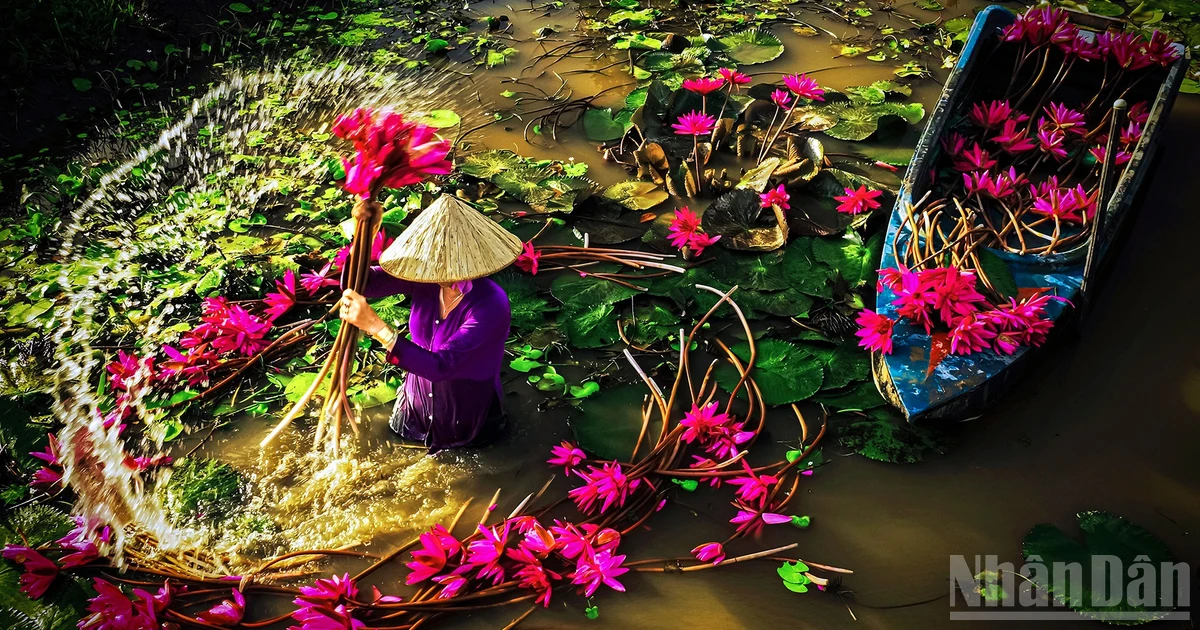 |
| Tay Ninh Holy See, which is also known as Cao Dai Temple by the local people, is located on Pham Ho Phap Street in Hoa Thanh Town, about 5 km southeast of Tay Ninh City and about 100 km west of Ho Chi Minh City. |
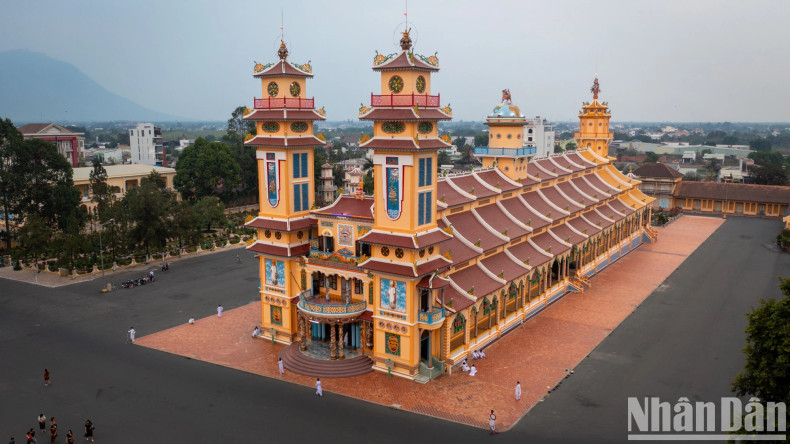 |
| In Caodaism, the full name of the holy see is Tay Ninh Cao Dai Holy See. The project includes more than 100 large and small architectural works located on an area of more than 1.2 square kilometres, with 12 surrounding gates. The gates have all been carved with images of the four sacred animals (the dragon, unicorn, turtle, and phoenix) and lotus flowers. |
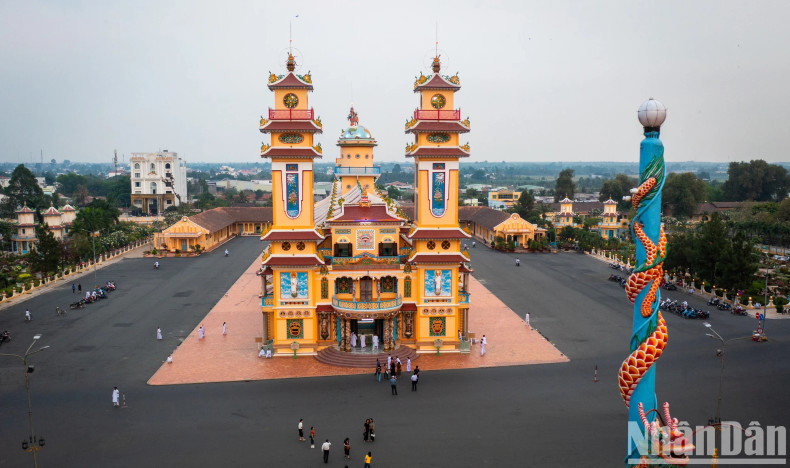 |
| The centre of the project is the main temple, with a length of 135 metres and a width of 27 metres. There are many parts of the Holy See built to dimensions that are basic multiples of 9. |
 |
| This massive project was built over 20 years (from 1926 to 1947), with five construction stages. During the construction of the Holy See, all stages were constructed by hand and were not based on any papers or drawings, completely relying on the skills of the workers. Strangely, many workers are farmers who have never attended any art school. They successfully created tens of thousands of sculptural patterns and dozens of statues reaching high fine art qualifications. |
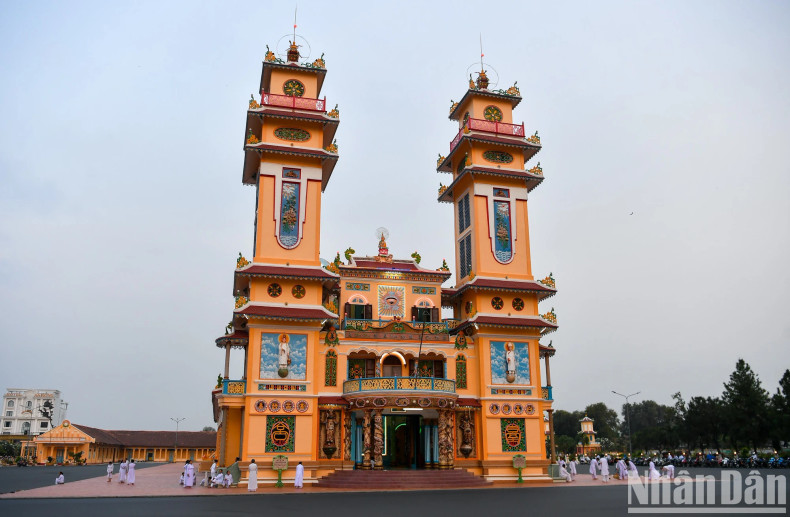 |
| Notably, during the construction, the participants were not allowed to get married so as to maintain "purity" while creating the Holy See, which is considered by Cao Dai followers as the God's will combined with manpower. This is the central place of worship the Cao Dai religion, because Tay Ninh is considered the ancestral land of the religion. |
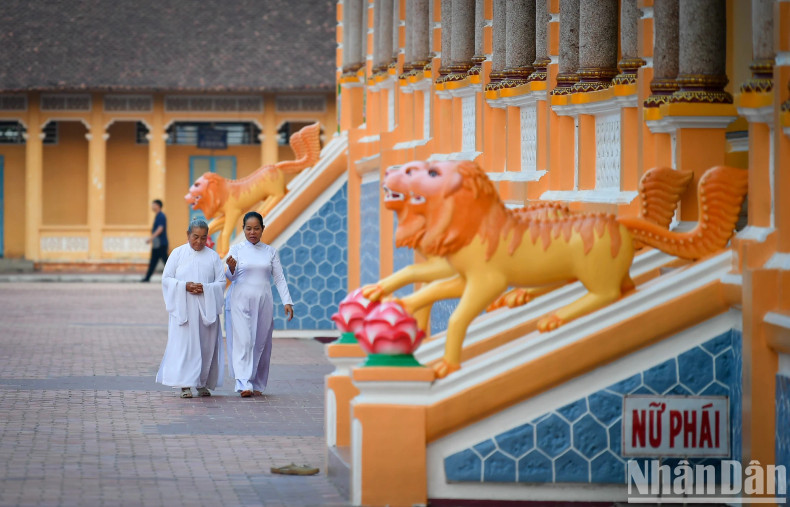 |
| Every day, Cao Dai followers have four service hours. According to regulations, men enter the main hall through the right door, while women enter through the left door. |
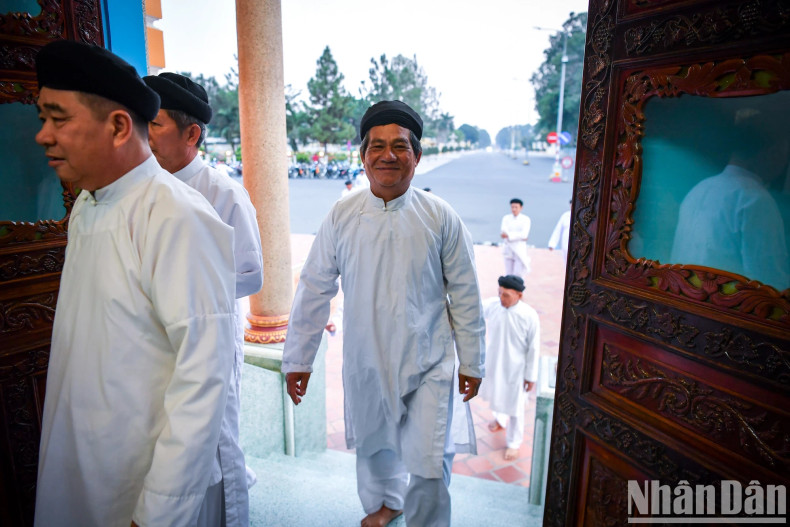 |
| Male followers enter the main hall through the right door. |
 |
| Before the ceremonies. |
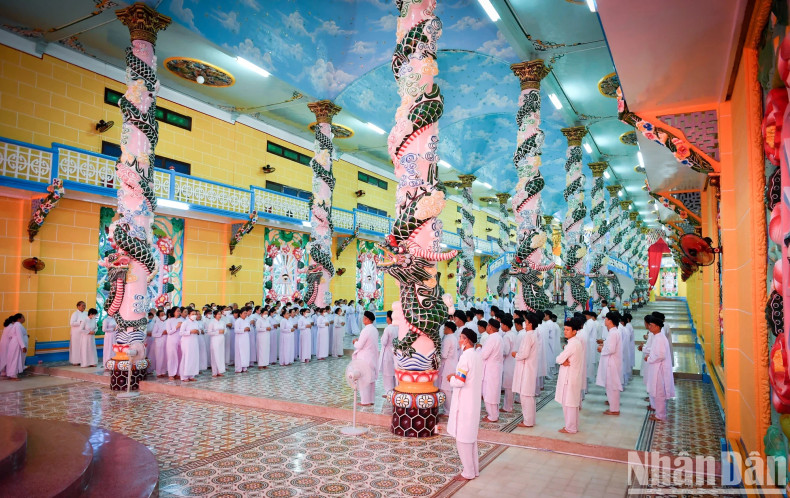 |
| Cuu Trung Dai (main hall) is the most attractive place for tourists in the Holy See. The space is 81 metre long and 27 metre wide, separated from other spaces in the main hall by 18 pillars divided into two sides, and is carved and decorated with exquisite images of the dragon. |
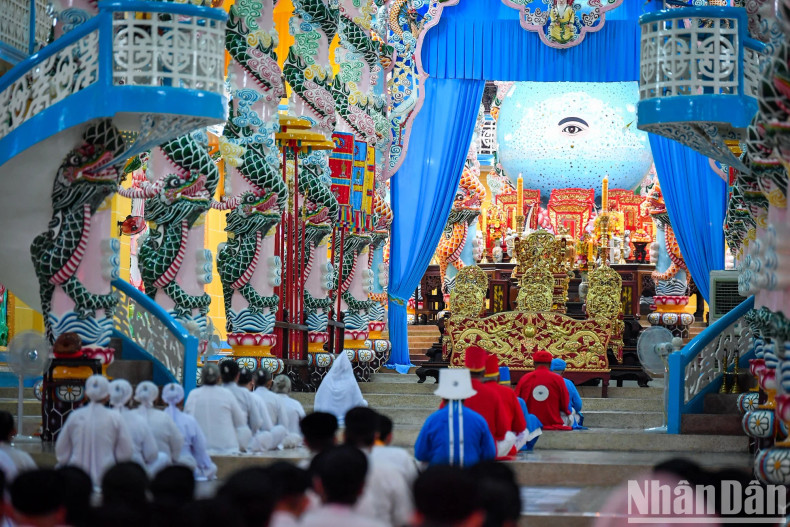 |
| These rows of pillars divide the main hall into nine compartments. This is the praying area for each level of followers. When the worshiping ceremony takes place, the dignitaries and followers will each have a separate position corresponding to their rank in Cao Dai religion. The ceiling has the painted image of stars and clouds symbolising the heavens. |
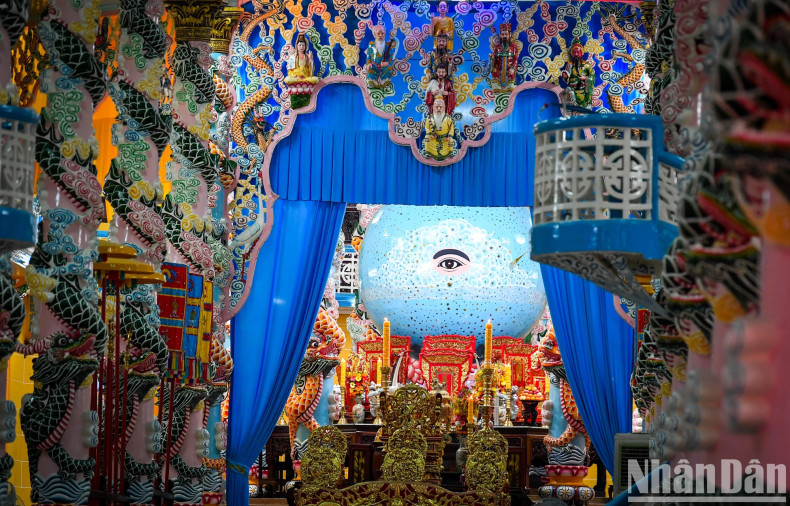 |
| The bat quai (bagua) area is located at the end of the Holy Temple and has a yellow painted roof. This area has eight dragon-designed pillars arranged in a bagua shape. In the middle, there is a celestial sphere with a diameter of 3.3 metres. This is also a special part of the Holy See compared to others of Caodaism. The celestial sphere symbolises the cosmogony of the religion. |
 |
| The solemn atmosphere during the ceremonies. |
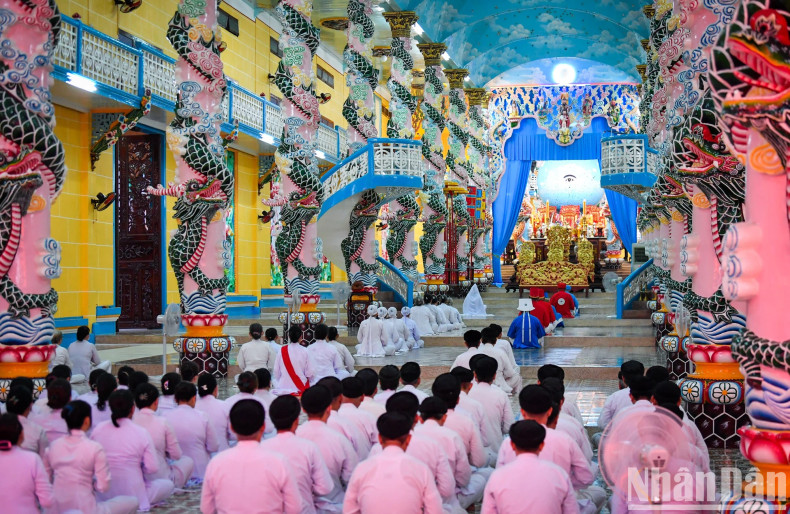 |
| Only Cao Dai followers are allowed to enter the main hall during the ceremonies. |
 |
| The solemn atmosphere during the ceremonies. |
 |
| Unique motifs at Tay Ninh Holy See. |
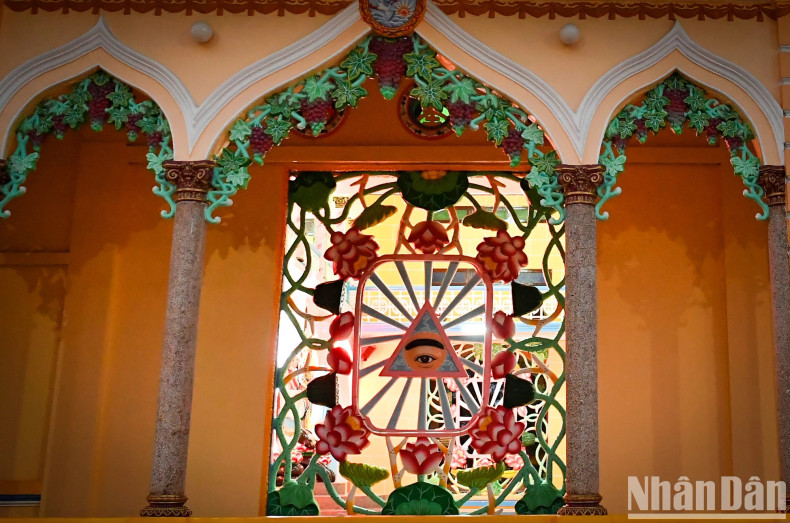 |
| The image of the God’s eye at Tay Ninh Holy See. |
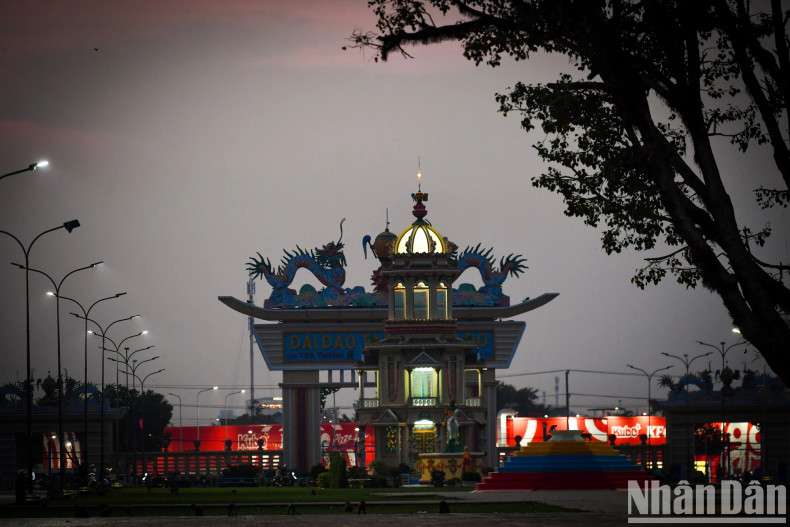 |
| One of the 12 gates leading into the Holy See in the late afternoon. |
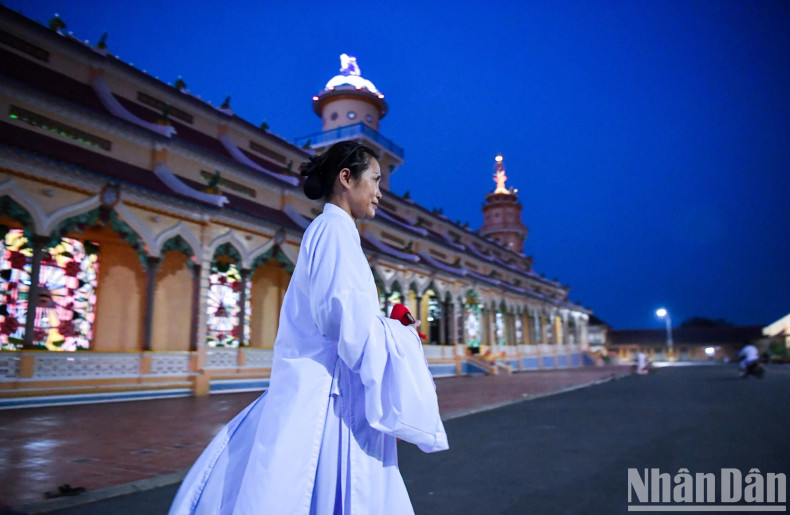 |
| The followers leave the Holy See after the ceremony. |
 |
| The followers leave the Holy See after the ceremony. |
 |
| Not only is it an important religious place for Cao Dai dignitaries and followers, the Tay Ninh Holy See is also considered one of the most popular tourist attractions in the Southeast region thanks to extremely unique architecture by the hands of untrained farmers and a long history. |
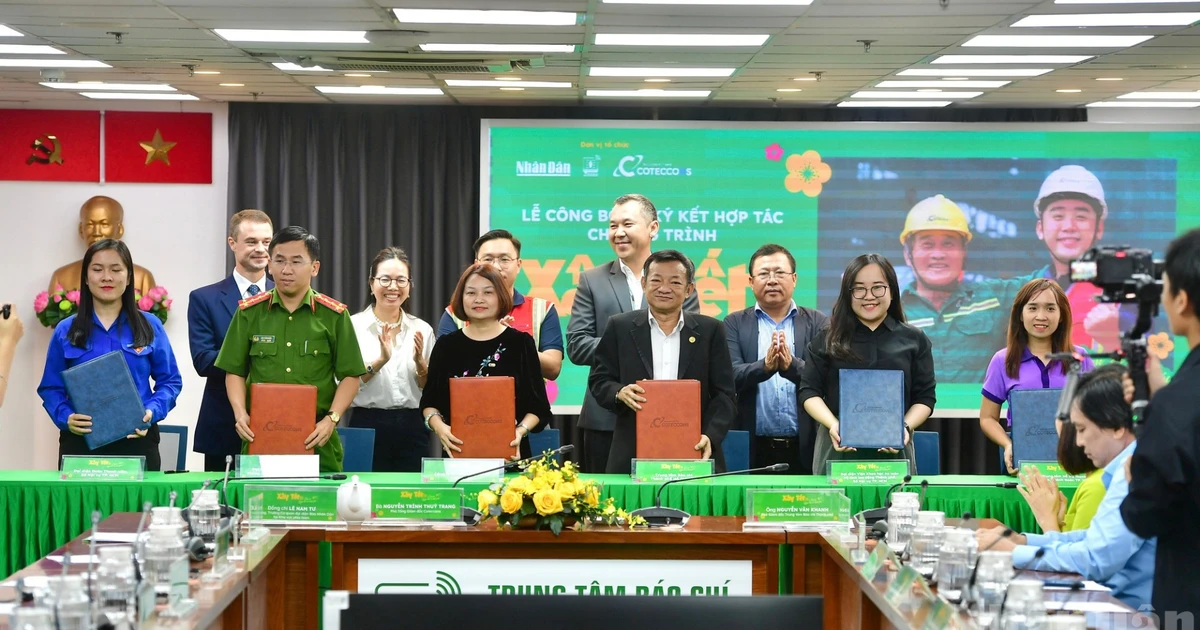
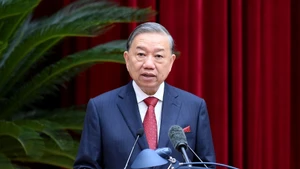
![[In Pictures] Nhan Dan Newspaper and Coteccons launch the Building Tet 2026 Programme](https://en-cdn.nhandan.vn/images/5992a12dd6e78b9bfb434962ff18307331f51c4c3a3e5fcfcd42f0234766d9c45840b0c6e06f3d50c1b8ba0f0abda1a6b665eff40edce9ec48a5692486f5a3ef/201225-xay-12.jpg.webp)



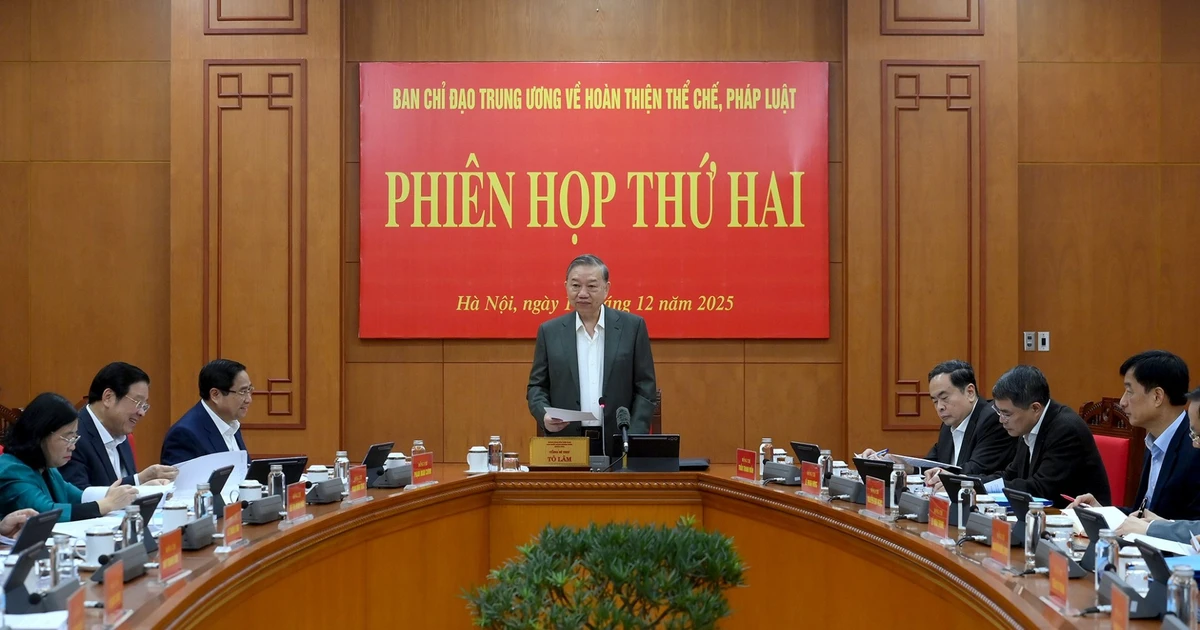
![[In Pictures] Award ceremony of the Human Act Prize 2025](https://en-cdn.nhandan.vn/images/5992a12dd6e78b9bfb434962ff18307331f51c4c3a3e5fcfcd42f0234766d9c42f03518febde2c9d258f98c1db4a3b214eb54d6f36cee30ec8ae9b858fada279/171225-da-10.jpg.webp)



